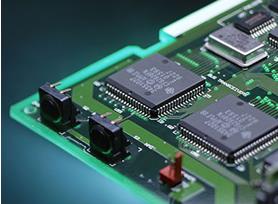FPC flexible circuit boards are characterized by lightness, thinness and shortness, so they are also the best choice for most intelligent electronic products. Flexible circuit boards are also prone to operations such as bends, folds, and scars during use. They have low mechanical strength and are easy to crack. Therefore, the purpose of the stiffener is to strengthen the mechanical strength of the FPC flexible circuit board, and to facilitate the installation of parts on the PCB surface. There are many types of reinforcing films used in the flexible circuit board, depending on the requirements of the product. Mainly include PET, PI, adhesive, metal or resin reinforcement board and so on.
1. The main process of FPC flexible circuit board reinforcement
PCB production process:
Cutting (copper foil protective film reinforced PSA) - drilling (copper foil protective film reinforced PSA) - black holes or PTH - dry film - film alignment - exposure - development - copper electroplating - dry film removal - chemical cleaning -Apply dry film-Film alignment-Exposure-Development-Etching-Remove the dry film-Brushing-Apply/under protective film-Laminate-Fix reinforcement-Laminate-Punch-Printing-Bake-Surface treatment- Paste PSA-divide-red lead-electrical check-punch shape-FQC (full check)-OQC-packing-shipping

2. Reinforcing fit
1. Thermo-compressive reinforcement: At a certain temperature, the thermo-hardening glue of the reinforcement film begins to melt to make the reinforcement film stick to the product and position the reinforcement.
2. Pressure sensitive reinforcement: without heating, the reinforcement can stick to the product.
3. Reinforced pressing
1. Thermocompressive reinforcement: Use high temperature to melt the thermal hardening glue of the reinforcement film, and use appropriate pressure or vacuum to make the reinforcement film tightly fit on the flexible circuit board.
2 Reinforcement of the pressure sensitivity of the flexible circuit board: no heating is required, and the product is pressed by a cold press
Four, maturation
For hot-pressing reinforcement: the pressure is small during pressing and the time is short. The reinforced thermo-hardening adhesive is not completely aging, and it needs to be baked at a high temperature for a long time to completely age the adhesive and increase the adhesion of the reinforcement to the product. .
Fifth, the introduction of flexible circuit board PCB equipment
.Refrigerator: store the reinforced film that needs to be refrigerated
.Pre-attachment machine (C/F laminating machine): laminating thermo-compressive reinforced film
.Manual laminating fixture: laminating cold pressure reinforcing film
.Vacuum machine: presses the finished product of hot-pressing reinforcement
.80-ton fast press: press the PI-type thinner hot-compressive reinforcement and lamination finished products
.Cold press: compresses the cold compressibility reinforcement
.Oven: Baking the finished product with hot-pressing reinforcement and pressing
6. Stiffener Film
.Reinforcement film: Reinforce the mechanical strength of FPC flexible circuit boards to facilitate surface mounting operations. Common thicknesses are 5mil and 9mil.
Adhesive: It is a kind of thermosetting adhesive or pressure sensitive adhesive, and the thickness is determined according to customer requirements.
Release paper: to prevent the adhesive from sticking to foreign objects before pressing.
.Store the reinforced film that needs to be refrigerated according to the requirements on the material card
.Refrigerated temperature: 1~9 degree Celsius, shelf life is 3 months under refrigerated conditions
.The flexible PCB reinforcement material can not be stored for more than 8 hours at room temperature